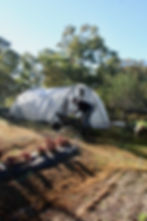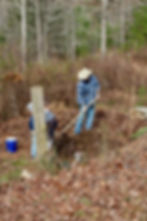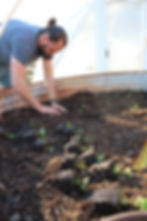A Beginner’s Guide to Composting at Home
- Allie Correa
- Aug 20
- 2 min read
Composting is one of the simplest ways to live more sustainably—and it’s something anyone can start, no matter the size of their yard or home. At Arrows Farm, we see firsthand how composting transforms waste into rich, healthy soil that nourishes our crops. Composting can be done at home and greatly benefit your own backyard garden.
If you’ve ever wondered how to start composting or whether it’s worth the effort, this guide will walk you through everything you need to know.

Why Composting Matters
When food scraps and yard waste end up in a landfill, they don’t break down the way they do in a compost pile. Instead, they produce methane, a potent greenhouse gas. Composting not only keeps waste out of landfills, but it also creates nutrient-rich soil you can use for your garden, flower beds, or even potted plants.
By composting at home, you:
Reduce waste and your environmental footprint
Save money on soil and fertilizers
Improve your garden’s health naturally
Join a movement toward more eco-friendly living
What You Can Compost
The key to healthy compost is balancing “greens” (nitrogen-rich materials) and “browns” (carbon-rich materials).
Greens (Nitrogen):
Fruit and vegetable scraps
Coffee grounds and filters
Tea bags (without plastic)
Fresh grass clippings
Browns (Carbon):
Dried leaves
Shredded newspaper or cardboard
Straw or hay
Small branches and twigs
What to Avoid:
Meat, dairy, and oily foods (they attract pests)
Diseased plants
Pet waste
Anything treated with chemicals

How to Start Composting
You don’t need fancy equipment to get started—just the right conditions.
Step 1: Choose Your Spot
Pick a dry, shady area close to a water source. This could be a corner of your yard, a bin on your porch, or even an indoor compost container if you live in an apartment.
Step 2: Build Your Pile or Fill Your Bin
Start with a layer of browns, then add greens, and keep alternating. Aim for about 3 parts browns to 1 part greens.
Step 3: Maintain Your Compost
Turn or mix it every 1–2 weeks to add oxygen.
Keep it moist—about the texture of a wrung-out sponge.
Add more browns if it smells bad, or more greens if it’s too dry.
Step 4: Harvest Your Compost
In 2–6 months, your compost will turn dark, crumbly, and earthy-smelling. That’s when it’s ready to use in your garden.
Composting in Small Spaces
No yard? No problem. You can still compost:
Indoor Compost Bins: Small, sealed containers that keep odors in and fit under the sink.
Worm Composting (Vermicomposting): A bin of worms that break down food scraps into rich fertilizer—great for apartments.
Community Compost Programs: Many towns have drop-off locations or collection services.

Turning Waste into Something Beautiful
Composting is proof that small changes can make a big difference. Every apple core, coffee filter, and pile of autumn leaves you compost is one less thing heading to the landfill—and one more thing nourishing the earth.
At Arrows Farm, we see compost as a way to close the loop—feeding the soil that feeds us. We encourage you to give it a try at home and experience the difference for yourself.
